Enjoy the nutrients in health-giving herbs—simply and easily—by making your own herbal infusions, teas, and decoctions.
How to Make Herbal Infusions
There is something about the word “infusion” that seems so vital. The first thing that comes to mind my mind when I hear that word is an IV infusion. As in, lifesaving fluids and minerals, delivered directly to the blood stream, to salvage failing health.
You May Also Enjoy:
“Calendula: Lymph Mover, Detoxifier, Cancer Fighter, and Skin Beautifier”
“The Grapes of Youth: 11+ Age-Defying Reasons to Love This Plant”
“Making and Using a Poultice … Even on Hard-to-Treat Areas!”
As someone who once had a small business, I also think of cash infusions, of the sort that can keep a business going when it otherwise might fail. These kinds of infusions have almost desperate or dire connotations associated with them.
An herbal infusion, by comparison, is equally vital, but altogether more gentle in its action. Herbal infusions, mindfully used, can help promote a baseline of better health and well-being. They are easy to use and a great gateway into home herbalism.
Herbal Infusions Are Great for Beginners
For those of you who are new to home herbalism, herbal infusions are a perfect way to begin infusing your body with gentle, loving care on a regular basis.
Herbal infusions are simple to make. They can be created with herbs you grow yourself or buy in bulk. Plus, you have probably already made them before without realizing it.
Discover the shockingly simple way to get real nutrition that will deeply nourish your body. (Seriously, this method is so easy—and effective—you’ll wonder why you’ve never heard of it before!) Click here to learn more!
Long-steeped herbal teas are one of the most basic forms of herbal infusion that you can make at home. So, if you’ve ever set a timer and let a bag of chamomile or dandelion root tea soak for the full 10 minutes prescribed on the box, you already have some experience.
4 Different Kinds of Herbal Infusions
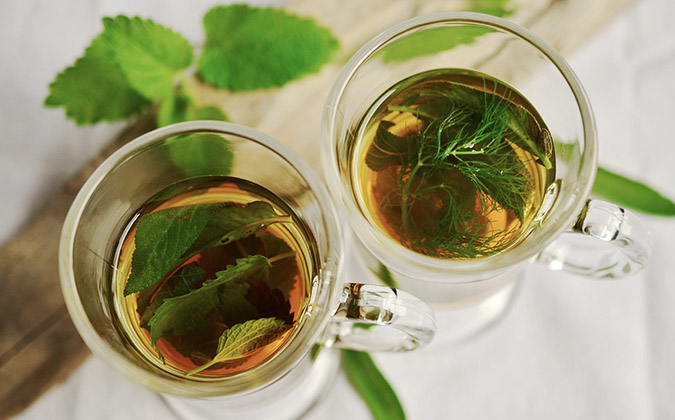
Image by congerdesign from Pixabay
Now, herbal teas are just one kind of herbal infusion. Depending on the kind of nutrition and health benefits you are seeking, there are actually several different infusion methods you might want to consider.
The term “herbal infusion” is most often used in reference to herbal teas, hot herbal infusions, and cold herbal infusions. A decoction, though, is also sometimes referred to as an herbal infusion.
The thing these four methods all have in common is that water is the tool used to extract the health and medicinal benefits from herbs.
Since water is not a preservative, herbal infusions don’t have the long shelf life that comes with other herbal preparations like tinctures. But you can make them on demand whenever you need them.
You May Also Enjoy:
“How to Make Your Own Tinctures, Salves, and Essential Oils”
“Equisetum Hyemale (Horsetail): The BEST Plant for Tooth Health + 8 More Benefits!”
Let’s take a closer look at the various methods for making herbal infusions at home.
Herbal Tea
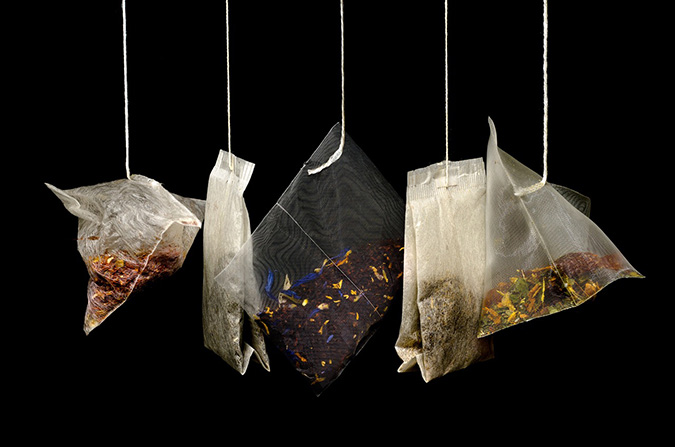
Image by Rudy and Peter Skitterians from Pixabay
Making tea is the most basic herbal infusion, and it has been used for thousands of years. You can make it using tea bags, a tea strainer stuffed with herbs, or just by putting loose herbs in the bottom of a cup.
Heat your water on the stove. When it boils, pour it over your herbs and allow them to steep for 10-20 minutes. Then, remove your tea bag or strainer and enjoy.
If you opt for loose tea and no strainer, you may get a mouthful of herbs in your last swig if you want every last drop of goodness. But, that’s the way it would have been done prior to the 17th century, when tea strainers first became common.1)https://www.teamuse.com/article_170413.html So, if you want a little historical adventure, skip the strainer!
You May Also Enjoy:
“19 Benefits of Hibiscus: Blood Pressure Regulator, Cancer Fighter, Liver Protector, and Much More!”
“12 Uses for Rose Petals—From the Kitchen to the Boudoir (With Recipes)”
Teas are generally made with dried herbs, because drying makes the leaves more compact and often more potent. Depending on the herb and strength of flavor desired, the quantities of herbs used typically range from about 1-3 tsp. per cup.
Herbal teas are also usually enjoyed hot. However, there is no reason you can’t put them over ice on a hot day and enjoy them as a cooling treat.
Herbs to Consider: Cinnamon, Holy Basil (Tulsi), Hibiscus, Sage, Rose Hips, Rooibos, Peppermint
Hot Herbal Infusion
Hot herbal infusions take a lot longer to make than your standard herbal tea. However, they use the same basic process.
Heat a pot of water. Put your loose herbs in a container and cover them with boiling water. At this point, though, instead of straining the tea and enjoying after 10-20 minutes, allow the herbs to infuse the water for about 8 hours. Then you can strain and drink your infusion as a water substitute several times a day.
You May Also Enjoy:
“Oatstraw: Stress Reliever, Love Potion, Brain Booster, and More”
“19 Remarkable Benefits of Stinging Nettle”
“Top 10 Health Benefits of Stevia”
After straining, store these infusions in the fridge for 24-48 hours. Some people will keep them as long as 3 days. However, some herbal medicine practitioners say that proteins and compounds may begin to break down if hot infusions are stored that long.
Because of the long soaking time, hot herbal infusions can often be more pungent-tasting than herbal teas. So, some hot infusion users steer clear of herbs that have tons of tannins or other bitter qualities.
You may also want to mix and match better-tasting herbs with not-as-delicious herbs for a more pleasant experience. Natural sweeteners like stevia can also be added at the end to make hot infusions more palatable.
Also, if you are using glass containers such as quart jars to make your infusions, make sure you warm your container before you pour boiling water into it to avoid the risk of cracking or shattering.
Herbs to Consider: Calendula, Catnip, Chickweed, Cilantro, Cleavers, Clove, Dandelion Leaf, Elder Flower, Gotu Kola, Holy Basil, Hops, Horsetail, Lemon Balm, Linden, Mullein, Stinging Nettle, Oat Straw, Olive Leaves, Oregano, Passionflower, Peppermint, Plantain, Red Raspberry Leaves, Yarrow
Cold Herbal Infusion
Cold herbal infusions are basically just like making sun tea. Put your herbs in a clear container. Cover them with room-temperature water. Then, set them in a sunny location for the better part of the day. Strain and drink as you would hot herbal infusions.
You May Also Enjoy:
“Siberian Ginseng: The Adaptogen for Astronauts, Athletes, and Anyone Under Stress”
These are usually not as potent as hot herbal infusions. However, they often taste better since many of the more pungent properties are not liberated in this process.
Because the water is not boiled, these infusions may develop mold faster than hot infusions. So use quickly after infusing. You may also want to add more herbs to your infusion to get a stronger taste.
Herbs to Consider: Chamomile, Lemon Balm, Marshmallow, Moringa, Motherwort, Peppermint, Roses
Herbal Decoction
An herbal decoction is similar to a tea and hot herbal infusion in that it is made using boiling water. However, in decoctions, herbs are simmered in the water for 20-45 minutes over an active heat, rather than steeped in water that cools quickly.
To make an herbal decoction, add dried herbs to your pan and cover with water. Generally you need about 1-3 Tbsp. of your chosen herbs per quart of water to get a good strength for your decoction.
After a rolling boil is achieved, turn the pot down to a simmer for the full time your recipe calls for. This method makes for a potent preparation. Heat applied over that long period can break down the leaves and allow more minerals and beneficial compounds to be extracted from some herbs.
You May Also Enjoy:
“Dandelions: 31+ Uses for the King of Weeds”
Decoctions tend to be much more full-flavored than any of these other water-extraction methods. They often pick up more of the bitter flavors that come from things like the tannins and terpenes in your herbs. They also tend to extract more minerals and will pick up flavors from the minerals, too.
As such, decoctions may taste better if you add some powdered stevia or a bit of honey as they are cooling. Or you may want take them quickly and follow them up with fresh water or a nice herbal tea to make the experience more pleasurable.
Herbs to Consider: Artichoke Leaf, Ashwagandha, Astragalus, Black Cohosh, Borage, Burdock, Dandelion Root, Echinacea, Sarsparilla, Turmuric
Conclusion
Herbal infusions are a fun and easy way to begin to proactively improve your health. They infuse you with the healing and protective powers that the herbs you choose imbue. However, they also infuse you with the power to begin taking an active part in your own health management at home.
Whether you grow your own herbs or buy in bulk from reputable suppliers, the various kinds of herbal infusions are powerful tools to help you be healthy and live well.
What Do You Think?
Do you have any experience making your own infusions? Do you have any favorite recipes or herbs that you use on a regular basis? We’d love for you to share your experience with our community using the comments section below.
_______________
This is an updated version of an article that was originally published on July 1, 2019. The author may not currently be available to respond to comments, however we encourage our Community members to chime in to share their experiences and answer questions!
Psst! Our Lawyer Wants You to Read This Big, Bad Medical Disclaimer –> The contents of this article, made available via The Grow Network (TGN), are for informational purposes only and do not constitute medical advice; the content is not intended to be a substitute for professional medical advice, diagnosis, or treatment. Always seek the advice of a qualified health care provider with any questions you may have regarding a medical condition. If you think you may be suffering from any medical condition, you should seek immediate medical attention. You should never delay seeking medical advice, disregard medical advice, or discontinue medical treatment because of information provided by TGN. Reliance on any information provided by this article is solely at your own risk. And, of course, never eat a wild plant without first checking with a local expert.

Tasha Greer is a regular contributor to The Grow Network and has cowritten several e-books with Marjory Wildcraft. The author of “Grow Your Own Spices” (December 2020), she also blogs for MorningChores.com and Mother Earth News. For more tips on homesteading and herb and spice gardening, follow Tasha at Simplestead.com.
References
| ↑1 | https://www.teamuse.com/article_170413.html |
|---|
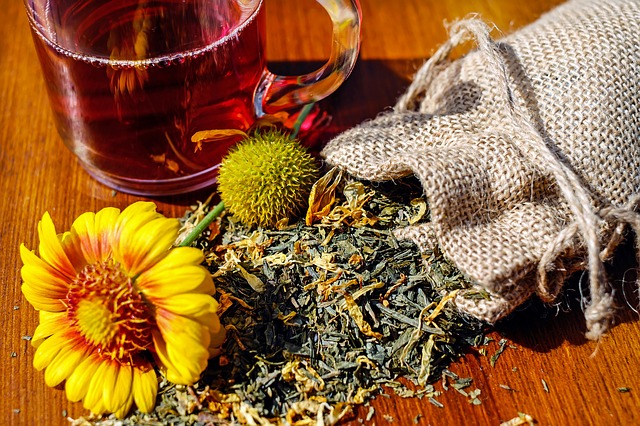
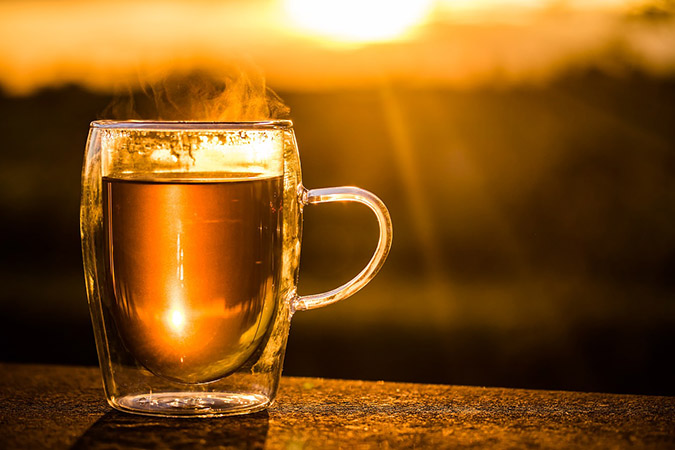
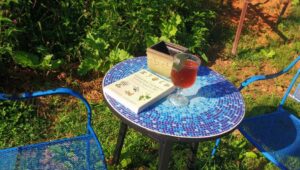
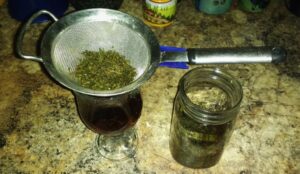
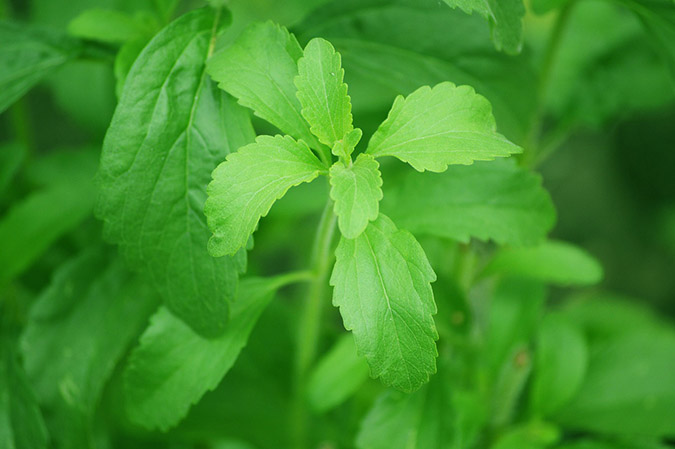
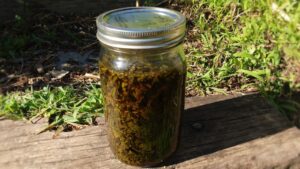
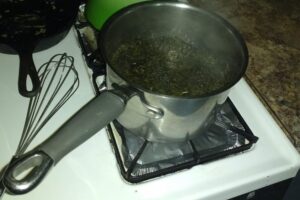







COMMENTS(3)
Nice article, Tasha! I Liked how you gave suggestions of herbs to use with each method. Very practical. You can also put herbs and water in a blender for 10-20 seconds for an instant infusion. It’s not always as strong as the other methods, but it’s good when you need something right away.
That’s a great suggestion! I do that with fresh herbs when making soups and sauces to better “infuse”the flavor at the end of cooking. But I never thought about doing it for a quick infusion. Thanks for sharing!
Great article! I also appreciated the specific use suggestions you made throughout. In particular, I appreciated the ‘sometimes you need to sweeten it’ suggestion. I recently made a decocted tincture of elder leaf. Ooooo… that was rank going down! Cured what ailed me almost before I’d finished swallowing it, but it tasted NAS TEE! I’ll have to try a bit of honey next time.